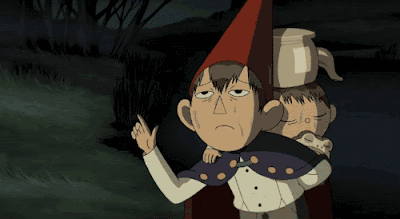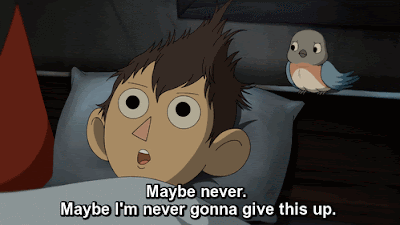In my family, I was the only grandchild that wanted to go to Greece. My grandfather was more than happy to send me on a six week volunteer program with the American Farm School in Thessaloniki, Greece that his brother had made a large donation to many years ago. The really neat part about the American Farm School? All the fresh produce. They even had their own bees! My fellow high school aged volunteers and I enjoyed many of the fruits of the school’s fields. We ate honey comb, we sampled their wine, and we were even privy to a cooking lesson or two. One of the things I was taught to make while I was in Greece was the rejuvenating cucumber yogurt sauce, tzatziki.
Ingredients:
Two quart containers of plain Greek yogurt
Three large cucumbers
Juice of three large lemons
One clove garlic (more won’t hurt you if you want more)
One large white or yellow onion
Fresh dill
Pepper to taste (you can add salt too if you like)
First, get two bowls—one large enough to hold your tzatziki when it’s finished, and another for compostables. Next, peel and slice the cucumbers. I like to halve my cumbers and then slice the halves, but you can quarter your slices too or leave them whole. I find halved and quartered slices are easier to fit in one’s mouth, but the size of slice won’t affect the taste. Next, chop your onion and add your garlic. You can work with minced garlic for the next part if you’d rather not mince your clove by hand, but I find fresh garlic achieves the best taste. Once you have your three ingredients in the bowl, pour the yogurt in and mix. Once ingredients are sufficiently mixed, juice your lemons, pour the juice in, and mix again. Finish off by chopping or hand tearing your dill and sprinkling it and a dash of pepper into the mix. Mix one final time and taste. If you’d like a tarter flavor, more lemon juice is what you’ll need. If you want a little more spice, add more pepper, not more garlic. Garlic is very powerful and if you add too much it can overpower the taste of the cucumbers, dill, and onion. If you find your tzatziki is too watery for your tastes, you can always salt your cucumbers or press them to remove moisture there. This version is ready to serve as soon as you’re done making it, just like we did in the kitchen at the American Farm School.
That recipe is a Thessaloniki recipe for tzatziki. Should you ever travel to Greece you’ll find that different cities will dress your gyros differently. Greece was a nation of city states for quite some time, and so things vary from city to city. In Thessaloniki it will come with ketchup, mustard, and french fries. In Athens, tzatziki. As you might expect, though, the different regions of Greece make their tzatziki differently too. There are as many versions of this recipe as there are variations of the Greek Myths. Here’s a recipe for Athenian tzatziki that uses more garlic, table spoons of olive oil, and no onion or lemon juice for a different kind of taste. It also has measurements if that’s your thing—we all know it’s not mine by now.
Ingredients:
½ a large cucumber, unpeeled
1½ cups plain full-fat Greek yogurt
2 large garlic cloves, finely minced
2 Tablespoons extra virgin olive oil
1 Tablespoon white vinegar
½ teaspoon salt
1 Tablespoon minced fresh dill
This version of tzatziki takes a little longer. First you’ll want to grate the cucumber and drain it through a fine mesh sieve overnight in the fridge. You’ll want to combine your yogurt, garlic, oil, vinegar, and salt in a large bowl and refrigerate them overnight as well. The next day, just throw your cucumber in with the rest of the ingredients, add your dill and mix.
Now, this snack, dip, or tasteful side dish is one of my favorite refreshing foods for the summer. There's protein, cucumbers, and it goes well with everything. It leaves me feeling full—not only in stomach but also in spirit. The one cartoon I continually come back to for the same feeling is Over the Garden Wall created by Patrick McHale.
Over the Garden Wall is a cartoon mini-series that embodies the same rejuvenative goodness as our tasty cucumber yogurt sauce. Just in case you require more proof than my word...
The pilot episode featured a vegetable car that brothers Wirt and Greg and human-girl-turned-blue-bird companion Beatrice were trying to fix up. The cucumber wheels on the vegetable car are not the only reason I keep coming back, however. Whenever I feel lost, this show gets me.
Made of ten, ten minute episodes, Over the Garden Wall tells the story of two brothers lost in the woods. Initially, it feels very fairy tale. The premise, the setting, even the dialogue trick the viewer into thinking they know what’s going on (similar to Undertale). Very quickly, however, every expectation and trope is turned on its head. Wirt and Greg are not two fairy tale heroes. Instead, they come from a very modern town, and their fanciful costumes come from their Halloween festivities. In reality, Wirt and Greg have fallen into a lake and are in the process of drowning.
None of this comes to light until the ninth episode of the series, however. The entire time, the viewer is tricked into thinking they understand Wirt and Greg’s circumstances, that they know what motivates and moves them. This is a constant theme for the series, as the stories woven throughout the ten minutes episodes are only small glimpses into the worlds and lives of the characters.
The story is set in a wood called The Unknown—a fitting name, since even the show’s greatest fans can’t seem to decide what kind of place The Unknown actually is. In a graveyard in Wirt and Greg’s reality the gravestone of one Quincy Endicott is visible. During the events in The Unknown, Wirt and Greg meet a Quincy Endicott who is alive, well, and in love with someone he believes to be a ghost. Since Wirt and Greg’s lives are also in jeopardy, does this mean The Unknown is the land of the dead? Beatrice and her family seem to live in The Unknown, however. But have they only been doing so since they were transformed into blue birds? Even if that is the case, how would this land them in a world of the dead? A small toy boat set on a river by two boys in the opening sequence of the series becomes the ferry boat for Wirt, Greg, Beatrice, and a host of frogs. The moon never changes phase. The season is decidedly autumn, but moves into winter with snow and ice as Wirt and Greg begin to question if they will ever get home. The toys of a toymaker come to life and sing songs of their roles to each other. A woodsman grinds trees into oil to keep the lantern he believes his daughter’s soul resides in lit. Perhaps instead, The Unknown is a place we create in our minds—a sort of blend of reality, dream, and perception. Although there’s plenty of evidence to suggest this theory, there’s also plenty of evidence to support the land of the dead and a slew of other theories. Honestly, The Unknown resists interpretation.
And that is precisely what I love about it.
Over the Garden Wall is one small story in a world where there are many. The viewer can’t understand them all. Nothing is laid out and made clear except the story of Wirt, Greg, and Beatrice. So much of what happens around them, to the characters outside of their troupe, and in the world isn’t covered—and it’s that great big real-world wonder that leaves me satisfied at the end of the series.
The woodsman comes home to his daughter. A dishonest horse finds a way to make an honest living. The frogs find their mud to hibernate in. A young girl and an old crone bound by circumstance find a way to be family after that circumstance is broken. Beatrice returns home to her family. And Wirt and Greg finally make it home. We see the endings of these stories, but plenty of the middle and sometimes even the beginning is left out.
There are four comics that complement the series and get into some of the bits of story the viewer doesn’t see in the original cartoon series, but even with that coverage, one will never truly know everything about what rests over the garden wall. Not that the viewers will ever stop trying!
You see, Over the Garden Wall is much like our own lives. We are one small story in a world that we can’t possibly hope to know everything about. We simply live in it. There’s no way to know where everyone came from, or what they might do. Reality doesn’t conform to the tropes of a story book. Refreshingly, neither does Over the Garden Wall.







No comments:
Post a Comment